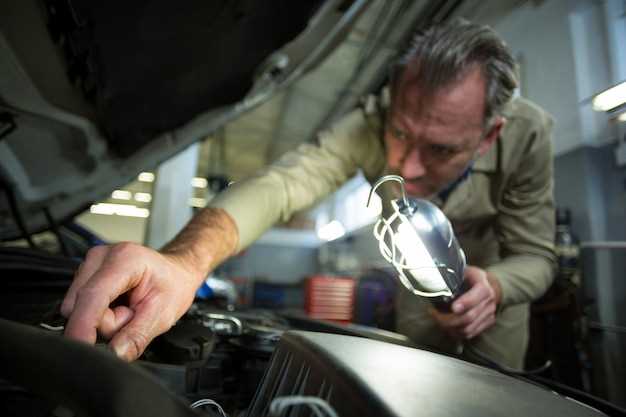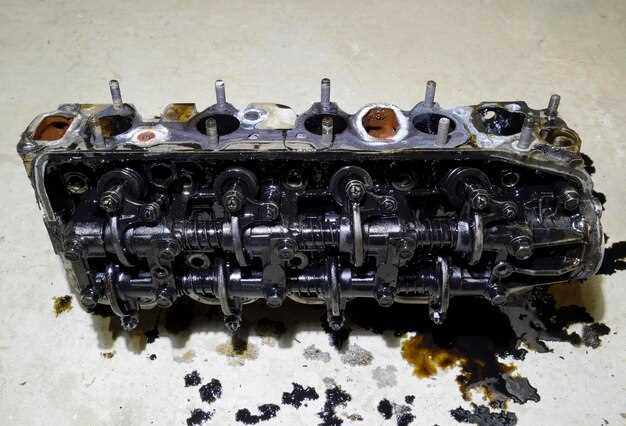
Race cars are engineered for high performance, pushing the limits of speed and efficiency. One critical component that often faces extreme stress is the exhaust header, which directs exhaust gases away from the engine. Unfortunately, the high temperatures and pressures in racing environments can lead to cracks in the headers, compromising both performance and safety.
Repairing cracked headers is essential for maintaining optimal engine function and ensuring that the car performs at its best on the track. A cracked header can lead to exhaust leaks, which not only decrease engine efficiency but can also cause dangerous conditions by allowing exhaust gases to escape into the vehicle’s cabin. It is crucial for race teams and car owners to address these issues promptly to avoid further damage.
This article will delve into the various methods of repairing cracked headers, from welding techniques to the use of specialized adhesives. We will outline the pros and cons of each approach, ensuring that you have a comprehensive understanding of how to restore your race car’s exhaust system to peak condition. Whether you’re a seasoned racer or a newcomer to the motorsport world, knowing how to effectively repair cracked headers is vital for any vehicle maintenance strategy.
Identifying the Source of Cracks in Exhaust Headers

Identifying the source of cracks in exhaust headers is crucial for maintaining the performance and longevity of race cars. Several factors contribute to the formation of these cracks, and understanding them can aid in effective repairs and preventative measures.
First, thermal stress is a primary culprit in the development of cracks within exhaust headers. As the engine operates, the exhaust headers experience extreme temperature fluctuations, causing the metal to expand and contract. Repeated cycles can result in material fatigue, eventually leading to cracks. Monitoring the operating temperatures and using materials designed to withstand high heat can mitigate this problem.
Another significant factor is vibration. Race engines produce substantial vibrations that can stress the exhaust system. If the exhaust headers are not secured properly or if there are worn mounts, the vibrations may lead to hairline cracks. Ensuring that the exhaust system is well-supported can help alleviate these stresses.
Inadequate design or poor fabrication can also lead to cracks. Headers that are not properly designed for a specific application may not distribute stress evenly, making them susceptible to cracking. High-quality materials and precision engineering are essential in preventing design-related issues.
Corrosion is another cause of cracks, particularly in older headers or those exposed to harsh environments. Factors such as moisture, road salt, and exhaust gases can lead to rust and degradation of the metal. Regular inspection and maintenance, including the application of protective coatings, can help combat corrosion and prolong the life of exhaust headers.
Finally, improper installation can contribute to cracks at connection points. Ensuring that flanges are torqued to the manufacturer’s specifications and that the headers align correctly with the engine will reduce stress and the potential for cracking.
In summary, recognizing the factors that lead to cracks in exhaust headers–thermal stress, vibration, design flaws, corrosion, and installation errors–can significantly enhance the reliability and performance of a race car. By addressing these issues proactively, racers can prevent cracks and ensure a more efficient exhaust system.
Step-by-Step Guide to Welding Cracked Headers
Welding cracked headers is a crucial skill for any race car enthusiast. Properly repaired headers can enhance performance by ensuring optimal exhaust flow. Follow these steps to effectively weld cracked headers.
-
Preparation
- Assess the damage on the headers. Identify all cracks and determine their severity.
- Clean the header surface with a wire brush or grinder to remove rust, dirt, and contaminants.
- Ensure you have the necessary tools: welding machine, filler material (if required), safety gear, and proper ventilation.
-
Select the Right Welding Method
- TIG welding is preferred for stainless steel headers due to its precision and cleanliness.
- MIG welding can also work for certain materials but may require more post-weld cleanup.
-
Welding the Cracks
- Position the header securely in a welding fixture or vise.
- Heat the area around the crack slightly before starting the weld to reduce warping.
- Apply the weld bead along the crack, making sure to overlap slightly on both sides.
- Use a steady hand to maintain an even weld throughout the crack.
-
Inspection and Finishing
- Inspect the weld visually for any gaps or irregularities.
- Grind down the weld to create a smooth surface, ensuring it does not restrict airflow.
- Check for leaks by pressurizing the header while submerged in water or using a smoke test.
-
Reinstallation
- Carefully reinstall the welded headers on the race car, ensuring all connections are secure.
- Start the engine and allow it to reach operational temperature while checking for any signs of exhaust leaks.
By following this guide, you can effectively repair cracked headers, enhancing the longevity and performance of your race car.
Preventive Measures to Avoid Future Header Cracks

To prevent cracked headers in race cars, it is essential to focus on several key practices that enhance the durability of these critical components. First, using high-quality materials during the manufacturing process is crucial. Opt for headers made from durable alloys or stainless steel, which can withstand high temperatures and thermal expansion without succumbing to fatigue.
Another important measure is to ensure proper installation of the headers. Correct torque specifications should be followed to avoid undue stress on the bolts and flanges, which can lead to cracks over time. Additionally, using flexible exhaust mounts can help absorb vibrations, reducing stress on header connections.
Regular inspection of headers post-race is essential for early detection of any signs of wear or stress. Look for visual cracks or discoloration that may indicate overheating. Addressing these issues promptly can prevent further damage and costly repairs.
Moreover, optimizing the engine tuning can significantly reduce exhaust temperatures. Running an engine that is too rich or lean can lead to overheating, which puts additional strain on the headers. Proper tuning ensures that the engine operates efficiently and within safe temperature ranges.
Lastly, consider implementing a cooling system that can effectively manage engine temperatures during races. Maintaining optimal cooling will help keep headers from reaching their thermal limits and reduce the likelihood of cracking. By taking these preventive measures, the longevity and performance of race car headers can be significantly enhanced.






